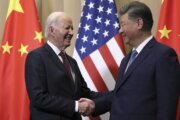Low-cost exchange-traded funds are popular with retail investors because they’re cheap and manage risks better than most individual investors can. But picking the right ones can be tricky, and the tricks can change with the times.
Investors use ETFs to add diversification or to gain exposure to certain market sectors or themes, like health care, real estate or S&P 500 companies. Some ETFs also provide smaller investors with an on-ramp to securities that they might not otherwise be able to access.
[Sign up for stock news with our Invested newsletter.]
A lot has changed about the economy in the past few years, and new funds have emerged as ETFs’ popularity has blown up. Newer ETFs reflect trends like recession fears, especially in real estate, and changes in the bond market.
All the fund picks below have among the lowest fees in their categories, and they have provided solid returns relative to the benchmark indexes they’re designed to track:
| ETF | Category | Expense ratio |
| BNY Mellon US Large Cap Core Equity ETF (ticker: BKLC) | U.S. large-cap stocks | 0% |
| iShares Core S&P Total US Stock Market ETF (ITOT) | Diversified U.S. stocks | 0.03% |
| Schwab U.S. Aggregate Bond ETF (SCHZ) | Diversified bonds | 0.03% |
| BNY Mellon Core Bond ETF (BKAG) | Diversified bonds | 0% |
| Vanguard Small-Cap ETF (VB) | Small-cap stocks | 0.05% |
| Schwab US Small-Cap ETF (SCHA) | Small-cap stocks | 0.04% |
| Pacer Benchmark Industrial Real Estate SCTR ETF (INDS) | Real estate stocks | 0.55% |
| Fidelity MSCI Health Care Index ETF (FHLC) | Health care stocks | 0.08% |
| iShares Core MSCI International Developed Markets ETF (IDEV) | International stocks | 0.04% |
| iShares 1-5 Year Investment Grade Corporate Bond ETF (IGSB) | Corporate bonds | 0.04% |
| SPDR Portfolio Corporate Bond ETF (SPBO) | Corporate bonds | 0.03% |
Large-Cap U.S. Stocks
BNY Mellon US Large Cap Core Equity ETF (BKLC)
This large-cap fund has gained about 9.8% year to date as of May 12. With $1.7 billion in assets under management, it’s smaller than another category leader and previously recommended fund on this list, Schwab U.S. Large-Cap ETF (SCHX). The two funds’ returns have been close, with BNY leading in one-year returns and the Schwab fund slightly better over the last three years, thanks to similar portfolios.
“You get familiar names like Amazon.com Inc. (AMZN) and Apple Inc. (AAPL), and there are no fees,” says Todd Rosenbluth, head of research at New York-based VettaFi. That’s right: Management fees are zero, lower even than Schwab’s 0.03% of assets annually, or $3 for each $10,000 invested.
Expense ratio: 0%.
Diversified U.S. Stocks
iShares Core S&P Total US Stock Market ETF (ITOT)
This $41.4 billion fund from industry giant BlackRock Inc. (BLK) tracks the S&P Total Market Index, meaning it owns shares in big, small and midsize companies, with top holdings among its roughly 3,300 stocks dominated by familiar names such as Apple, Amazon, Microsoft Corp. (MSFT) and Nvidia Corp. (NVDA). Even the smaller companies that compose less than a tenth of a percent of the fund include well-known names such as Shake Shack Inc. (SHAK) and SeaWorld Entertainment Inc. (SEAS).
“It’s a good U.S. all-capitalization fund with a competitive expense ratio,” says Aniket Ullal, head of ETF data and analytics at CFRA Research in New York.
Expense ratio: 0.03%.
Diversified Bonds
Schwab U.S. Aggregate Bond ETF (SCHZ)
A good diversified bond fund will produce income, finally, after years of near-zero interest rates. Rosenbluth tabbed Schwab U.S. Aggregate Bond ETF as one of the best of the bunch, and it has been for the past few years. It tracks the Bloomberg U.S. Aggregate Bond Index with a mix of corporate bonds, Treasurys and municipal bonds.
Expense ratio: 0.03%.
BNY Mellon Core Bond ETF (BKAG)
Ullal’s pick in this category is BNY Mellon Core Bond ETF, another quality fund from this provider. The Schwab fund is bigger and trades more actively, but the BNY Mellon fund tracks the same Bloomberg index and has a similar composition with an expense ratio of zero. The Schwab fund has had slightly better historical returns, according to ETF Database.
For a larger fund option, Ullal picks Vanguard’s Total Bond Fund (BND), with the same 0.03% expense ratio as the Schwab fund.
Expense ratio: 0%.
[READ: How to Invest in the S&P 500]
Small-Cap Stocks
Vanguard Small-Cap ETF (VB)
“No one gets fired for picking Vanguard,” jokes Rosenbluth, recalling the maxim that it was always safe for companies to buy IBM computers once upon a time. The fund has $41.7 billion in assets under management and is benchmarked to the CRSP US Small Cap Index. It’s also had a solid performance over time, with a three-year annualized return of 12.6% versus the category average of 10.5%, according to ETF Database.
Expense ratio: 0.05%.
Schwab US Small-Cap ETF (SCHA)
The Schwab fund has slightly lower fees than Vanguard’s offering, at 0.04%, but Vanguard’s performance has recently justified its extra $1 a year per each $10,000 invested. It beat the Schwab fund by a relative margin on one, three and five-year annualized returns, according to ETF Database.
One distinctive wrinkle for the Vanguard fund right now, though, is that 2.2% of its assets are in cash, while otherwise no holding in either fund is more than 0.4% of the portfolio.
Both funds have the largest chunk of their assets in financial stocks; otherwise, Schwab bets a little more heavily on health care, while the Vanguard fund emphasizes manufacturers.
Expense ratio: 0.04%.
Real Estate Stocks
Pacer Benchmark Industrial Real Estate SCTR ETF (INDS)
This year has proved to be a funny time in real estate so far, with high recession fears that are especially focused on the commercial real estate market. Vanguard Real Estate ETF (VNQ), a previous pick in this category, remains a solid choice that offers broad exposure to commercial real estate. Rosenbluth also highlights the less-expensive Fidelity MSCI Real Estate Index ETF (FREL), with recent returns in the ballpark of the larger Vanguard fund.
One wild card, though, is that the looming problems in commercial real estate are concentrated in the office sector, where vacancy rates have climbed amid the one-two punch of recession fears and more people working from home.
The Pacer Benchmark Industrial Real Estate SCTR ETF lets investors avoid office risk by focusing on the warehouse and factory sectors. “Right now, industrial is one of the sectors of real estate that is doing much better,” Ullal says.
The smaller Pacer fund comes with higher fees, but it could pay off in the expected office downturn. Year to date the fund is up 10.3%, demolishing its category average.
An alternative: a housing-focused fund such as SPDR S&P Homebuilders ETF (XHB), a bet that the recent strength of homebuilder stocks will persist.
Expense ratio: 0.55%.
[SEE: 7 Dividend ETFs for Retirement Investors.]
Health Care Stocks
Fidelity MSCI Health Care Index ETF (FHLC)
Vanguard Health Care ETF (VHT) from U.S. News’ previous list of cheap ETFs is still a contender here, but the top pick is Fidelity MSCI Health Care Index ETF based on its lower fees — an 0.08% expense ratio versus 0.1%. The two funds’ top 10 holdings are all the same names but in slightly different proportions, and their returns track each other closely.
Insurance companies, drugmakers and medical device makers are all represented. The Vanguard fund’s advantage for shorter-term investors may be that it trades more often: $46 million of daily volume compared with $9.5 million for Fidelity’s smaller fund.
Expense ratio: 0.08%.
International Stocks
iShares Core MSCI International Developed Markets ETF (IDEV)
Schwab International Equity ETF (SCHF), a top cheap ETF pick in this category in 2020 and still going strong, has performed slightly better but is more expensive than its close rival, BlackRock’s iShares Core MSCI International Developed Markets ETF. While the Schwab fund has among its top holdings both European and Asian stocks, such as Samsung Electronics Co. Ltd. and Toyota Motor Corp. (TM), BlackRock’s fund is led by European companies. Both have low expense ratios and are strong picks, but IDEV is getting the slot this time.
“The dollar hasn’t been as strong this year, which is good for international ETFs,” Ullal said. “A lot of money has gone into international ETFs this year.”
Expense ratio: 0.04%.
Corporate Bonds
iShares 1-5 Year Investment Grade Corporate Bond ETF (IGSB)
Rosenbluth says iShares 1-5 Year Investment Grade Corporate Bond ETF from BlackRock is his preferred pick this year to Vanguard’s Long-Term Corporate Bond Index Fund (VCLT), a long-standing favorite. The iShares fund has $24.2 billion in assets under management and has returned 2.5% so far this year as of May 12.
Expense ratio: 0.04%.
SPDR Portfolio Corporate Bond ETF (SPBO)
Ullal went for State Street’s SPDR Portfolio Corporate Bond ETF in this category. Each of these two funds has outperformed the other at different periods of time, with SPBO having slightly lower fees and excellent diversification. Both are focused on investment-grade bonds from well-known issuers, and each counts Bank of America Corp. (BAC), Microsoft and T-Mobile US Inc. (TMUS) debt among its top holdings.
Expense ratio: 0.03%.
More from U.S. News
ETF vs Mutual Fund: How to Choose for Your Investing Strategy
8 of the Best Vanguard ETFs for Retirees
11 Cheap ETFs to Buy in 2023 originally appeared on usnews.com
Update 05/15/23: This story was previously published at an earlier date and has been updated with new information.







